We have an exciting guest on today’s show, but first a listener question.
Becky Asks: “I have very sensitive skin and break out in acne all the time. I’ve heard about using oils to cleanse and moisturize my skin but I’m worried it will make me break out. Are there any okay for acne prone skin?”
Almond oil and Jojoba oil are good choices for acne prone skin. One of my favorite oils to consume comes from a food. That food is wild salmon. Salmon is great for healthy skin because of the Omega 3 oils and the astaxanthin content, but is wild salmon really safe to eat?
Today’s guest is Randy Hartnell, a former fisherman and current owner of a wild seafood company, will help answer this question. Randy spent more than twenty years as a commercial salmon fisherman in Alaska. In 2001 with his wife Carla, he founded Vital Choice Wild Seafood & Organics, a leading on-line seafood company.
[bctt tweet=”It’s great to support the people who are still earning a living by fishing in Alaska.”]Randy is dedicated to helping people have access to high quality sustainable seafood, while educating them about the impact of food choices on their health and the environment. In this interview, we cover health benefits of consuming seafood, quality, purity, and contamination concerns. Plus,the safest fish to eat, sustainable fishing practices, and the real difference between wild and farmed fish.
Topics discussed today include:
- Started fishing during college while working his way through school
- About 15 years ago industrial farmed salmon pushed wild salmon out of the market
- Randy decided to start Vital Choice as a solution for people who want wild salmon, but couldn’t get it
- People are becoming more informed about the difference between farmed and wild salmon
- Randy started telling his story to anyone who would listen and telling his story to people who were influencers in health and wellness
- These people were really receptive to the information
- Randy was a herring fisherman in San Francisco and his engine blew up, he was watching TV while rebuilding the engine and saw Dr. Perricone on PBS
- Dr. Perricone was promoting his book, “The Wrinkle Cure” Dr. Perricone was talking about how wild salmon was great for fighting wrinkles
- Randy and his wife wrote Dr. Perricone a letter and Dr. Perricone decided to list Randy’s fledgling business, Vital Choice as a resource in his next book “The Perricone Prescription
- What makes wild salmon so good for our skin is the Omega 3 fatty acids
- Particularly long chain fatty acids EPA and DHA, these are marine fats that are not found in the terrestrial food supply, our cells all contain concentrations of these long chain fatty acids
- In our industrial food supply these fatty acids have been displaced
- Over 95% of people eating an American diet are deficient in omega 3 fatty acids which manifests itself as skin problems
- Vital Choice has been testing the wild caught fish for over 15 years and the benefits of eating the seafood outweigh any possible trace levels of mercury that may be found in seafood
- They source fish that have short lives and eat toward the bottom of the food chain, like krill and plankton and the salmon they sell is one of the cleanest fish tested, Alaska is also one of the most pristine places on Earth
- They also sell other clean, pure, sustainable sources of fish
- Alaska is the model for the world on fishery management, they have a biologist in charge of every river to maintain sustainability
- Wild salmon is an amazing food for humans and other species
- Farmed salmon is similar to factory farmed beef or pork
- Wild salmon are consuming what nature intended them to consume
- Humans have always been eating wild seafood, it is what we are programmed to eat because it is a natural food
- Farmed salmon are fed grains, just like factory farmed cows, these grains contain omega 6 fatty acids that can be highly inflammatory
- Wild salmon has 9 times more omega 3s than omega 6s, a farmed salmon has equal amounts, this goes for all farmed fish from catfish to tilapia
- These salmon are also raised in pens with pollution, disease and parasites. The waste has a detrimental environmental impact.
- Canada just approved GMO salmon, the first GMO animal sold as food, they take a gene from a different fish and put it into salmon to make it grow to large abnormal sizes
- The problem with eating GMO foods is that nobody knows how these foods may modify our genes, we won’t know the impact for several generations
- Farmed salmon are pale orange and have large fat lines
- Wild salmon is dark orange and almost no fat lines
- Wild salmon comes from Alaska, they have had historic salmon runs in the last few years
Mentioned on today’s show:
Vital Choice Seafood
I hope you enjoyed this interview today with Randy Hartnell. If you have any questions please post them below the video on YouTube or my website.
Additional links to check out:
- Get your customized skin profile here. It’s free, and based upon your answers, it will give you great tips for glowing skin and vibrant health.
Don’t miss out on all of the latest tips to get glowing healthy skin from the inside and out. Be sure to follow me on Facebook, Pinterest, and Twitter. Join the conversation!
If you enjoyed this show please leave a review on iTunes.
Dr. Trevor: Hi there, I’m Dr. Trevor Cates. Welcome to the Spa Doctor podcast. I’m really excited about my guest today but before I get to the interview, I want to answer one of your questions. At the end of this interview, I’ll share with you how you can have your questions answered.
This is a question from Becky. “I have very sensitive skin and breakout in acne all the time. I’ve heard about using oils to cleanse and moisturize my skin but I’m worried it will make me breakout even more. Are there any oils that are okay for acne-prone skin?”
Well, Becky, that’s a great question. A lot of people with acne-prone skin or people that are concerned about breaking out think that you can’t use oils on this skin but it’s really about using the right kind and pure kinds of oils and the right blend.
There are two that I’m going to mention. If you’re doing a do-it-yourself skin care regimen or you’re looking at natural skin care products and ingredients in those, there are two that I recommend that you keep an eye out for. That’s almond oil and jojoba oil. Jojoba oil is one that you may not have heard of before. These are great oils for even acne-prone skin or dry skin, that works well too. They’re not going to be those pore clogging, acne producing kinds of oils. In fact, they actually help nourish the skin. You don’t want to dry out and strip your skin even if you tend to have oilier acne-prone skin. That’s some advice on oils.
Speaking of oils, one of my favorite oils to consume internally for glowing skin comes from a food. That food is wild salmon. If you’ve heard me talk about the best foods for skin, you probably heard me mention how great salmon is to eat for healthy skin because of its Omega 3 and astaxanthin content. I’ve had people ask me a lot of questions about fish because I talk about salmon being such a great food. They ask me if it’s safe to eat, if it’s sustainable for the environment. To answer your questions and tell you all about seafood, I invited a former fisherman and owner of a wild seafood company, Randy Hartnell.
Randy spent more than 20 years as a commercial salmon fisherman in Alaska. In 2001, with his wife Carla, he founded Vital Choice Wild Seafood and Organics, a leading online seafood company. Randy is dedicated to helping people have access to high quality sustainable seafood while educating them about the impact of food choices on their health, the environment, and seafood resource.
In this interview, we cover health benefits of consuming seafood, quality, purity, and contamination concerns, the safest fish to eat, the real difference between wild and farmed, and sustainable fishing practices. Please enjoy this interview.
Randy, it’s so great to have you on my show.
Randy: It’s a pleasure to be here, Trevor.
Dr. Trevor: Yes. Randy, you’re a different kind of guest than I typically have. You have an interesting background as a commercial fisherman, right? I want to hear about what that was like and how that got you into what you’re doing now.
Randy: Well, that was a great lifestyle. It’s been quite a while now. It’s been about 15 years since I retired from fishing. I was more or less forced out of it but I started way back in college, working my way through school and fell in love with the lifestyle. Earning a living out of nature, it was something I really loved for over 20 years.
About 15 years ago, industrial salmon started taking over world markets and basically pushed the wild salmon that we were catching out of the market. Almost overnight, the prices collapsed, couldn’t make a living out of it anymore. I needed to figure out something else to do. The real tragedy of it wasn’t that the fisheries weren’t healthy. Alaska has a fantastic management system that’s been in place for over 50 years. We were catching lots of fish. They just weren’t worth anything because nobody wanted them.
Everybody wanted the cheaper, more plentiful farmed salmon. At that time, they didn’t really know the difference between the two which can be really dramatic.
Anyway, I had to come up with something to do, essentially started Vital Choice as a solution for people who still wanted wild salmon but couldn’t get it. I view the company now as sort of a—we serve our customers, we connect this incredible resource up in Alaska with people across the country who appreciate it and want it. Fortunately, more and more people are becoming informed about the differences between wild and farm salmon. Our demand has been growing steadily ever since we started. That’s really a joy to be able to provide our customers with great seafood, one of the healthiest, more sustainable foods on Earth and also at the same time support the people that are still making a living fishing in Alaska.
Dr. Trevor: That’s fantastic. You mentioned that people are now more aware about the difference between wild and farm. What are some things that you saw made that shift happen?
Randy: That’s a great question. That really, that educational component has been a big part of our mission at Vital Choice from the very beginning because I came from the industry and I saw the devastation that resulted as a result of the abandonment of wild salmon. It’s very similar to what has happened in the cattle industry, all kinds of proteins where you have the big industrial feed lots that have put the small independent farmers out of business to the detriment of the nutritional quality of the food.
We started out basically telling our story to anybody who would listen and I sort of figured out that if I could connect with the influence first, especially in the health and wellness community who already had big audiences, and if I could educate them then they could in turn educate their communities; the people that read their books, that watches their special and so on and so forth. That was my mission initially, to do that.
What was really incredibly surprising and beneficial was that when I would reach out to these people—people like Dr. Christiane Northrup, and Dr. Nicholas Perricone, they were really receptive to the information. They wanted to hear it. They started putting us in their books. That just became sort of a campaign by which we educated a lot of people through them. I don’t think anybody else was reaching out to those particular types of folks the way that we were. Consequently, millions of people sort of got the story and now most of those people, most of the health influencers do understand it. Whenever they have an opportunity, whenever anybody asks them about the differences, they’re able to ask that information.
Dr. Trevor: You mentioned Dr. Perricone as one of the people. He is a dermatologist. Tell us the story about how you connected with him and how that went for you.
Randy: Sure. I was still a fisherman back then. In fact, I was fishing at a herring fishery in San Francisco. It was one of those life experiences that started out like the worst possible thing that could happen that actually turned into the best possible thing that could happen. We haven’t made much money during that period. I was down there trying to catch some fish and my boat broke down, my engine blew up. Went into the dock and we started to process it, rebuilding my engine.
I had this little TV on the boat that I would leave on just basically for movies in the background and it was on the PBS channel. Dr. Perricone was doing one of his programs on PBS, promoting a book. It was very popular at that time. I think it hit #1 on the Health And Wellness charts, it’s called The Wrinkle Cure. I remember thinking, “Wow, what is PBS doing promoting a book called The Wrinkle Cure?” As I listen to it, I realized that he was talking about wild salmon being the ultimate skin food. The ultimate wrinkle care because of all the healthy fats and the other micronutrients that are in not only salmon but other seafood.
I thought to myself, “Wow.” I was thinking about starting Vital Choice at the time. I was thinking, “Well, he’s telling his national audience to eat salmon and particularly wild salmon but 99% of them have no idea where to get it because it’s been displaced by the farm salmon.” I wrote him a letter. My wife and I sat down, spent a couple days, wrote him a letter and he responded.
To make the long story short, we flew out to Massachusetts or in Connecticut where his office is, I met with him, told our story, he said, “What you’re suggesting would be a great resource for my readers and my audience. We’ll put you in our next book.” He did. The rest is history, so to speak. The book came out.
Dr. Trevor: What book was that and when was it?
Randy: That was called The Perricone Prescription and that came out I think in August of 2002. We met with him about six months before then and he told us we have six months to basically get our company together. We had a couple websites and just all of that stuff, I really didn’t know what to do. It was an exhilarating six months but it all fell into place. He’s been sending us customers ever since.
Dr. Trevor: That’s great.
Randy: Very grateful for it as well.
Dr. Trevor: You mentioned what he talked about in his book. For those people who aren’t familiar with his book and what he talks about the nutrients in fish. What is your awareness of the nutrients in fish that are particularly good for our skin?
Randy: Well, first and foremost are Omega 3 Fatty Acids and particularly the long chain Omega 3 Fatty Acids, EPA and DHA, DPA. These are marine fats that are not found in the terrestrial food supply. Life evolved in the ocean, a background of these marine fats which originated algae, one of the earliest life form.
If you look at the primary biological components of our bodies, basically our cell, our eyes, our brains, our reproductive systems, those are all contained in concentrations of these long chain omega 3 fatty acids, and our skin of course. What’s happened with our industrial food supply is they have been pretty much displaced almost completely. I don’t know if you know this, the last statistics I saw was over 90%, probably close to 95% of people eating an American diet are terribly deficient in Omega 3 Fatty Acids and because they are on every cell of the body, brain, eyes, the deficiency will manifest itself in a lot of ways.
The most common way you could tell if someone’s deficient in Omega 3 Fatty Acids is by her skin problems. Dry skin, eczema, psoriasis. You know more about this than I do, I’m sure. Then of course as I said, there are a lot of other micronutrients found in seafood that are also beneficial.
Dr. Trevor: Right. I get there are a lot of questions that people have about the purity of fish and the concerns about contamination. I’ve got a question recently posted to me from Patricia and she asked, “Are wild caught salmon actually safe to eat?” She said, “My understanding is that salmon is high in mercury.” Also, she mentioned other contaminants in the ocean. Can you talk about that and the purity issues, contamination?
Randy: I’ll be happy to talk about that. We talk about that a lot. We named our company Vital Choice for quite a few different reasons, one as we mentioned earlier is our vital nutrients that you only get in the marine food supply or supplements occasionally.
Also, because of my experience in the industry, I know seafood very well. As far as contaminants go, what we’ve learned over 15 years of doing this, we test it, we know our customers are concerned about this and we, myself, my wife, children, all of our employees and their children, we eat more of our seafood than anybody. Obviously, we don’t want to eat anything that’s dangerous and harmful.
When you look into it, there’s just so much stuff out there on the internet sort of fear mongering about contaminants in seafood. If you really look at the science, the evidence is overwhelming that the benefits of eating seafood outweigh the risks. You don’t want to go out and eat the top of the food chain predator like a shark or a large billfish, you don’t want to eat anything that’s on the top of the food chain because trace levels of mercury that are pretty much in everything.
The problem or the issue is the dose. You know it’s like if you drink too much water, that could be lethal but it’s pretty apparent that minuscule trace levels of mercury in seafood are not harmful. The biggest, most elegant studies that have been done all concluded the same thing, that the benefits mask the outweighed risk.
What we do is we source fish that are known to have shorter lives. Salmon only lives two to four or five years, so it’s not out there accumulating large levels of mercury. They eat toward the bottom of the food chain, in particular pink salmon, sockeye salmon, they eat predominantly krill, plankton, bottom of the food chain. They’re actually one of the cleanest fish.
I’m not sure where Patricia got her information, but I can assure that we’ve done a lot of testing over the years and salmon are actually one of the cleanest fish in the ocean for those reasons; they eat at the bottom of the food chain and they’re relatively short-lived. And also, Alaska is one of the most pristine areas on Earth. If you’ve ever been there, it’s pretty magnificent. There’s a lot of really great seafood.
Dr. Trevor: Salmon’s one of your main fish that you carry, but you have other seafood as well.
Randy: We have lots of other kinds of seafood and it’s all great. Like to provide a variety, we get requests for things that we don’t have and we will look at them if we could find number one, clean, pure source and number two, a sustainable source. That’s another foundation of our company that we will only source sustainably harvested fish. Basically, that means that the fish are coming from fishery that is managed on a biological level. In other words, it’s not driven by market demand, it’s driven by the scientists that are in charge of making sure that no more fish are taken than that run can sustain.
That’s going to really model for the world. Fishery management they rely into their state constitution when they became a state that all of their fishing resources will be managed on a sustainable basis. You have biologists that are in charge of every river that produces salmon and those biologists are that one that dictates when you could go fishing, when you cannot go fishing and they want to ensure that every river gets a number of fish it needs. It’s really a great story. I don’t have time to go and do much of it today. The more you learn about seafood from Alaska, really the better it looks.
Dr. Trevor: That’s fascinating. I didn’t know that but that really ties into the questions that I get also about environmental issues with fish because I know that there’s some people that don’t want to eat fish because they’re concerned that they’re not sustainable, that we’re damaging the environment, we’re killing off populations of fish and that we’re going to lose salmon at some point.
I’ve actually heard that from people. Like, “We’re not going to have wild salmon anymore if we keep fishing the way that we fish.” The reason why I have you on is wild salmon is one of my favorite foods to recommend to people. Sometimes I get questions on it. I get these questions of purity, of environmental issues, so I think it’s really important for us to talk about these things so that people can feel comfortable eating this amazing food. Is there anything else you want to add to that?
Randy: Oh my god, it is truly an amazing food, not just for humans. I’ve seen estimates of up to 130 species rely on wild salmon. It’s not like we’re catching them all and taking away from other species. Let’s look at Sockeye salmon which is our signature product. Sockeye salmon only lived four years. They’re born in the rivers, they migrate out to the ocean where there’s lots of food and they grow and then at four years on average they return back to that same exact spot that they were born.
What happens—depending on the ocean conditions, climate, food, and all that—you may get 10 times, 20 times more fish returning to that particular river than those spawning habitats can actually accommodate. The river I used to fish in, the optimum number of spawners was about 2 million. Those biologists I referred to earlier would count. They’ve got all different ways of counting these fish coming back to the river. Once they were assured that they were going to get 2 million, everything else is what they call a harvestable surplus. One year, we have 20 million fish return to that river and it was a bonanza, 1995.
But the thing about it is, think of another protein, another food that’s allowed to live 95% of its life as nature intended. Salmon are not going to live longer than four years. When they get back to that river, their days are numbered. The harvestable surplus is taken there, then that becomes food for humans. A lot of the ones that go up the river become food for birds and everything, for bacteria all up to bears, big predators.
People really are surprised to hear that. It’s not like they’re being—as opposed to other types of animal foods where they’re only raised for a short time and then they’re taken to market.
Dr. Trevor: Can you spend a moment explaining the difference between what you just described as a wild salmon and what a lot of people are eating, and what’s available in most restaurants and grocery stores right? Farmed salmon. Even though there has been a shift, like you mentioned, most of the salmon that we see out there is farmed. Can you explain what that process is like?
Randy: The simplest analogy is the comparison between factory farmed, say beef, pork, chicken, whatever, and the free range pastured beef or even a better analogy would be game, wild game. The wild versions, whether it’s fish or game are out consuming what nature intended for them to consume. They’re basically the same thing that humans eat over the millennia.
Humans have been eating seafood; it’s been documented for over 160,000 years. We’ve been practicing agriculture for about 10,000. When you eat wild seafood, you’re basically eating what we were programmed to eat and our body recognizes that it’s a natural food.
Farmed animals, farmed salmon, and all the other things that I’ve mentioned in this day and age at our country, are essentially fed grain. Cows are herbivores. They’re not supposed to eat seed products, grain, corn, same with pretty much everything else but because this country has subsidized grain, they’re very cheap, they’re very plentiful, even the salmon, the farm salmon are being fed more and more of these grains.
I think we can all agree that salmon did not evolve to eat grain products. The big difference there is these grains are full of acid or omega 6 fatty acids and that’s kind of another subject. But as you know, omega 6 is an excess highly pro inflammatory. Whether we’re eating factory farmed chicken, or pork, or beef, we’re basically eating corn products. Lots of omega 6s and the same thing with farm salmon.
Wild salmon has roughly nine times more Omega 3s, these essential long chain Omega 3s, than Omega 6s. Whereas a farm salmon, because it’s being fed a lot of grain has about equal amount Omega 3s and Omega 6s. It doesn’t do nearly as good a job of increasing your Omega 3 status as wild fish will. That goes for any farm fish, cat fish, and farmed tilapia. We eat a tremendous amount of tilapia in this country. There’s very little nutritional value to that compared to a wild alternative.
Dr. Trevor: With the fish that are ground, farm-raised, they’re fed grain, but what about the environment, can you speak to that to the environment in which they’re raised.
Randy: That’s just the nutritional impact. Of course, there’s the fact that they’re raised in pens and the open marine environment. There’s tremendous pollution problem. They impact other species with disease, parasites, wastes. Farmed salmon is cheap because the environment is subsidized in all of the ways. We all know what the factory farms look like, the tremendous waste problems that they have. The fish farmers just let Mother Nature take care of the waste.
Here in British Columbia, we’ve got many fish farms out here off the coast set right along the migration routes where the wild salmon that are coming down out of the river so they have to pass through those waters and they’re picking up parasites, lice, diseases. There’s just a lot of problems. We can talk all day about the problems with farmed salmon. I would just suggest to your readers, if they’re interested in learning more about this, you can just Google farmed salmon and read lots of stuff about it.
Dr. Trevor: Can you briefly explain why that’s a concern?
Randy: First, genetically modified animal being sold as food as I understand it. There’s a lot of big questions there. What they’ve actually done is they’ve taken a gene out of one type of fish and put it into a salmon so that the salmon grows many times faster than it normally would. It’s called an antifreeze gene. It doesn’t waste a lot of energy. I don’t want to go into all the details here. Again, you can find all about that.
Dr. Trevor: I think that’s really interesting. If it’s bigger than it’s supposed to, that nature intended to, I wonder what that’s doing to its nutritional content with it.
Randy: That’s the big question.
Dr. Trevor: Then also when we eat foods that are genetically modified, what’s that doing to our genes? How is that going to modify our genes? Those are some of the questions.
Randy: I don’t think anybody can answer that and that’s the problem. They’ve had two studies that have basically determined that these are safe for humans. But of course, the GM debate has been raging now for many years.
Dr. Trevor: We won’t really know what the impact is for several generations; we won’t know what the impact really is.
Randy: The important take away here is just as with all GM foods, if you want to avoid them, we’ve been trying to pass labelling laws which are being defeated in every term so far. But the way that you’re sure you’re not getting genetically modified food is to source organic foods. The way to ensure that you’re not getting genetically modified salmon is to source wild salmon.
Dr. Trevor: Okay.
Randy: There’s a tremendous amount of fraud in the marketplace. A lot of farmed salmon is labelled as wild because more and more people are asking for it and most people don’t know how to tell the difference. Really, it becomes critical that you know your fish market and you buy product from stores or people that you can trust.
Dr. Trevor: Yeah. Is there a way to know the difference? Would you be able to tell by looking at a piece of fish if it was farmed versus wild?
Randy: I personally could tell. I presented the time, it depends on the specie. Farmed salmon is typically much more pale orange and has large white lines, fat lines in it. Then, wild salmon and especially sockeye salmon is dark orange. It’s called its nickname, red salmon because it flashes this brilliant red orange color. Almost you can’t see any fat in it. It’s an ocean roaming athlete versus farmed salmon which is swirling around in circles in a pen its entire life. It has a lot more fat. That’s one difference.
Typically, a store that’s going to offer wild salmon, they’re paying more in going into trouble to get that wild salmon and they will know where it comes from. Often times, people that are being disingenuous will not be able to answer direct questions about—if they’re saying it’s wild salmon, they should be able to tell you exactly where it came from. If they waffle at all, it’s usually a big yellow flag.
Dr. Trevor: I was at a restaurant and I asked—they said that we have wild salmon. I said, “Where did it come from?” They said, “Scotland.” And I thought, “Um, are you sure it’s wild?” Because if it’s wild it’s going to come from where? Randy, tell us where it’s going to be coming from if it’s really truly wild.
Randy: Nine times out of ten, it would be Alaska, possibly British Columbia but really almost all of it comes from Alaska. They have the biggest, healthiest ones. In the last few years, they’ve had a record salmon runs, historic levels of salmon runs. A big part of it is management and another big part of it is habitat. The lower 48 here, we’ve dammed our rivers head industry and and civilization so salmon are not done well in the lower 48 but Alaska has got 34,000 miles of coastline, it’s got thousands of rivers. Pretty much every one of them has a salmon run.
Most of the wild salmon you will see in the market is from Alaska. Right now, we are coming into summer and the salmon are just now starting to go back up to the rivers. This weekend in particular, the Copper river king salmon is the first fresh wild salmon of the year in Alaska so there’s a lot of excitement about that.
Dr. Trevor: It’s great. Well Randy, I feel like I could talk to you forever about fish and sometimes I have seen you at conferences before, I’ve talked to you a lot about this. I’m excited that we’re able to share this with my audience and I know that people probably have more questions. I’d love to be able to pass them along to you and maybe get back to people if that’s okay with you so people can post some comments below the video on YouTube and on my website. I’ll pass them along to you and then we can try and get people’s questions answered, because I know people have a lot of questions about the quality of fish and where to get it. Does that sound good?
Randy: We’re passionate about education every bit as we are about making the fish available. I’m happy to do that and I would invite your guest to visit our website here where we have a huge archive of information. We’ve got a search box in there so you can ask your questions. Got a great science based newsletter that comes out every week and that’s a great source of information, over a thousand issues in our archive. The website is a rich resource. You can also just call us up because we’ve got great customer service, there’s people to answer questions. I’ll be happy to handle them once in awhile.
Dr. Trevor: Your fish is delicious. I love getting orders from you. The fish really is amazing. Thank you so much for everything that you’re doing, provide us with fresh, healthy fish.
Randy: Thank you Trevor, thanks for helping us get the word out. bye.
Dr. Trevor: Alright, thanks Randy!
I hope you enjoyed this interview today with Randy Hartnell. To learn more about Randy and Vital Choice Seafood, visit my website here. Go to the podcast page with this interview and you’ll see all the information and links there. If you have any questions, you can post them below the video there or on YouTube.
Also, I invite you to join The Spa Doctor community on my website or subscribe to the podcast on iTunes so you don’t miss any of our upcoming shows.
If you haven’t done so already, I highly recommend that you get your customized skin profile here. It’s free and it only takes a minute to answer questions to get great tips for glowing skin and vibrant health.
Also, don’t miss out on the latest tips for glowing skin and vibrant health. Be sure to follow me on Instagram, Pinterest, Facebook, and Twitter and join the conversation. You can also post your questions there. Thank you and I’ll see you next time.
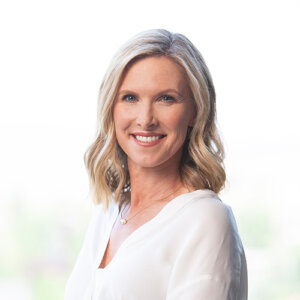
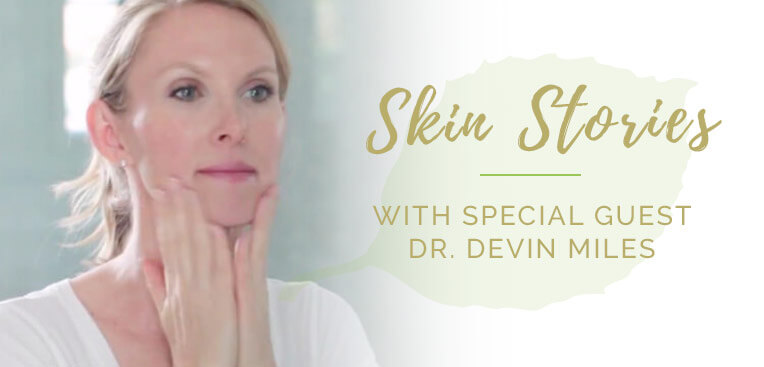
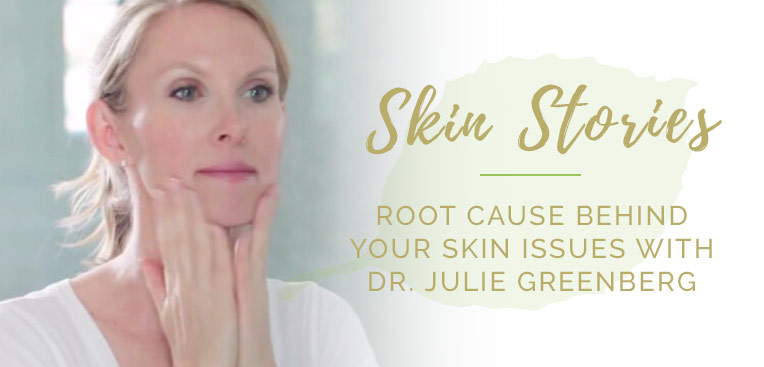
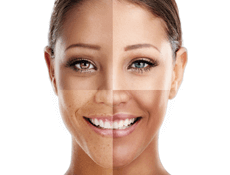
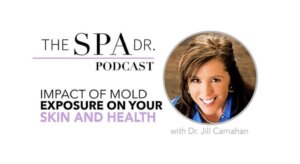
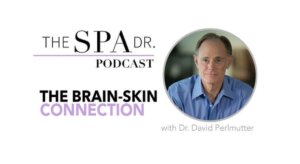
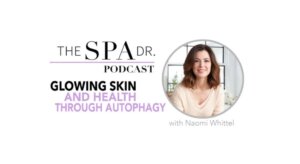
Reader Interactions
We no longer eat salmon after we used our gieger counter to test for radiation and it was positive. Due to the contamination or our oceans we eat very little seafood, stinks we loved it.
Hi Joyce, one cannot detect radiation at the levels it would exist in seafood with a Geiger counter. We discovered this when we wanted to test the fish ourselves and learned that any potential concentration would be so small as to require very sensitive (and expensive) testing equipment. Consequently, Vital Choice has been sending samples of our fish to the Eurofins Laboratory for testing every since the Fukushima disaster, with very reassuring results. There’s a great deal of sensationalism and fear mongering on the internet and in the media, but I’m happy to report (believe it or not) that Pacific seafood does not contain harmful–or in most cases even detectable–levels of radiation. In fact, according to the best science, avoiding seafood is likely to carry a greater health risk than consuming it. Hope this helps. –Randy
Fantastic interview! Fascinating!!!